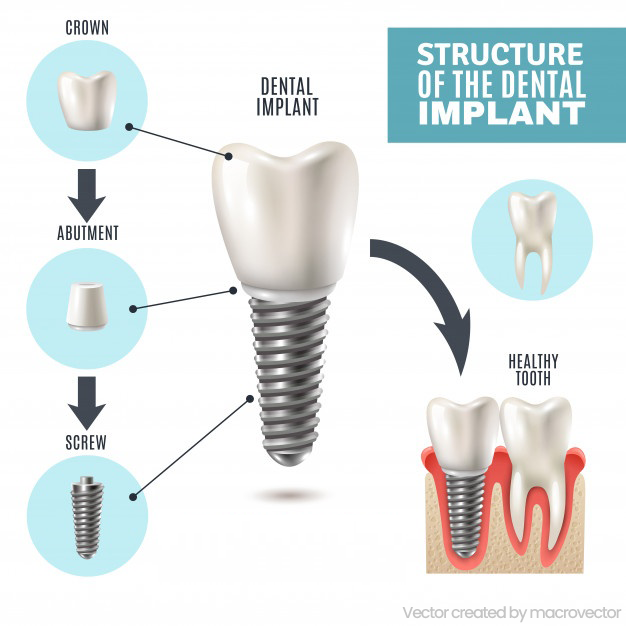A dental implant is an artificial tooth root that is placed into your jaw to hold a replacement tooth or bridge. Dental implants may be an option for people who have lost a tooth or teeth due to periodontal disease, an injury, or some other reason.
Are you a candidate for dental implants?
The ideal candidate for a dental implant is in good general and oral health. Adequate bone in your jaw is needed to support the implant, and the best candidates have healthy gum tissues that are free of periodontal disease.
What is a dental implant procedure like?
This procedure is a team effort between you, your dentist and Dr. Lam. Dr. Lam and your dentist will consult with you to determine where and how your implant should be placed. Depending on your specific condition and the type of implant chosen, Dr. Lam will create a treatment plan tailored to meet your needs.
Replacing a Single Tooth: If you are missing a single tooth, one implant and a crown can replace it.
Replacing Several Teeth: If you are missing several teeth, implant-supported bridges can replace them.
Replacing All of Your Teeth: If you are missing all of your teeth, an implant-supported full bridge or full denture can replace them.
What are the advantages of an implant over a bridge?
A dental implant provides several advantages over other tooth replacement options. In addition to looking and functioning like a natural tooth, a dental implant replaces a single tooth without sacrificing the health of neighboring teeth. The other common treatment for the loss of a single tooth, a tooth-supported fixed bridge, requires that adjacent teeth be ground down to support the cemented bridge.
Because a dental implant will replace your tooth root, the bone is better preserved. With a bridge, some of the bone that previously surrounded the tooth begins to resorb (deteriorate). Dental implants integrate with your jawbone, helping to keep the bone healthy and intact.
In the long term, a single implant can be more esthetic and easier to keep clean than a bridge. Gums can recede around a bridge, leaving a visible defect when the metal base or collar of the bridge becomes exposed. Resorbed bone beneath the bridge can lead to an unattractive smile. Bacteria may also lead to decay on the teeth that anchor the bridge.
How will the implant be placed?
First, the implant, which looks like a screw or cylinder, is placed into your jaw. Over the next two to six months, the implant and the bone are allowed to bond together to form an anchor for your artificial tooth. During this time, a temporary tooth replacement option can be worn over the implant site.
A second step of the procedure may be necessary to uncover the implant and attach an extension. This temporary healing cap completes the foundation on which your new tooth will be placed. Your gums will be allowed to heal for a couple of weeks following this procedure.
Finally, a replacement tooth called a crown will be created for you by your dentist and attached to a small metal post, called an abutment. After a short time, you will experience restored confidence in your smile and your ability to chew and speak. Dental implants are so natural-looking and feeling, you may forget you ever lost a tooth.
Every case is different, and some of these steps can be combined when conditions permit. Dr. Lam will work with your dentist to determine the best treatment plan.
What can I expect after receiving a dental implant?
As you know, your own teeth require conscientious at-home oral care and regular dental visits. Dental implants are like your own teeth and will require the same care. In order to keep your implant clean and plaque-free, brushing and flossing still apply!
After treatment, Dr. Lam will work closely with you and your dentist to develop the best care plan for you. Periodic follow-up visits will be scheduled to monitor your implant, teeth and gums to make sure they are healthy.

